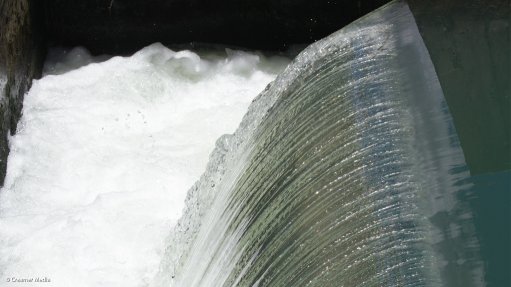
CAPITAL RESOURCE
Sanitation comprises about 60% of the capital costs of water services, with between 30% and 40% of water used flushing
Photo by: Duane Daws
With the gap between supply and demand for water expected to reach 17% by 2030, South Africans will be required to radically change their attitudes towards water use and conservation, particularly in the treatment of human waste, states the Strategic Water Partners Network South Africa (SWPN).
Game-changing new technologies requiring little or no water are essential if the country is to address the sanitation challenge and the looming water gap, according to the network.
The SWPN highlights that an estimated 11% of households are still without sanitation services, while these services do not meet the required standard for 26% of households that do have access to them. This leads to significant public health and environmental risks.
Water Research Commission executive manager and SWPN representative Jay Bhagwan agrees with Water and Sanitation Minister Nomvula Mokonyana’s statement that “it’s not all about flushing”, noting that universal access to sanitation does not mean that everyone must be able to flush, but rather that there is universal access to a more appropriate way of treating human waste.
“We need to build a culture which embraces the sustainability of water and recognises the benefits of treating human waste as an asset rather than a liability,” he says.
Further, alternative thinking is required for solutions, which will treat the effluent at source, result in beneficiation, deliver the same user convenience as a flush toilet and save water while being environmentally safe, as well as result in less or no wastewater and sewage.
Dry technologies, through processes that involve dehydration, desiccation, solar treatment and combustion, are promising and could provide the solution, which is urgently required, the SWPN suggests.
National Policy
In light of this, the recently released Draft National Sanitation Policy and the Medium Term Strategic Framework of the National Development Plan recognise the need for reforms that encourage new thinking regarding sanitation and the treatment of effluent.
SWPN expects that this draft policy will assist in addressing the sociocultural aspects of poor sanitation and pave the way for innovations in the treatment of effluent.
Sustainable sanitation and potable water solutions that meet the needs of the population necessitate a collaborative effort by consumers, industry stakeholders and government, the network stresses.
Effluent Reuse
Sanitation comprises about 60% of the capital costs of water services, with between 30% and 40% of water used for flushing toilets. While South Africa is one of few countries which returns up to 68% of water for indirect use, sludge should be regarded as a resource. Reuse provides an opportunity to recover phosphates and nitrates for fertilisation, to convert sludge into biogas for power and to recover water from flushing.
Despite some progress on effluent reuse at certain municipalities in South Africa, the challenge of treating waste relating to sanitation remains, Bhagwan says.
While current modalities for waste collection and removal are often messy and hazardous, they regard flush toilets and a central sewerage system as the optimal method of disposal.
However, in many cases, this is not sustainable in the longer term, the SWPN argues.
Consequently, industries should think twice before using potable water if lower-quality water is available and is just as suitable for a specific function, avers the SWPN.